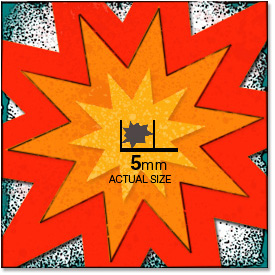 |
| Kidney stones form when calcium, oxalate, and other substances build up in the urine. When stones exceed five millimeters in size, they can get stuck between the kidneys and bladder, bringing intense pain. (UAB Magazine) |
The pain caused by kidney stones has been described as “the closest thing a man will come to experiencing childbirth,” so while it might seem fitting that more men than women get them, awareness can help both sexes avoid the pain.
“While research shows that the gender gap is decreasing, and that in teens more females than males develop kidney stones, for adults, men as a general rule get them more often than women,” said Dean Assimos, M.D., chair of the University of Alabama at Birmingham (UAB) Department of Urology. “But we should all build our awareness and take preventive steps.”
Symptoms that could indicate someone has a kidney stone include:
- Intense abdominal pain, which can radiate to the genital area
- Urge to frequently urinate
- Nausea
- Fever and chills
- Blood in the urine
“Always seek medical evaluation for blood in the urine,” Assimos added. “It also can be a sign of something more serious, including malignancy.”
Assimos said kidney stones can be attributed to both environmental and genetic factors. Environmental causes include where one lives and what one eats. If a first-degree relative — such as a parent — has had them, there is a two-to-three-times greater chance of forming a kidney stone.
“There also are medical conditions that increase kidney-stone risks,” Assimos added. “These include obesity, diabetes mellitus, hypertension, gout and bowel problems.”
Even if someone has a greater chance of developing kidney stones, there are several things they can do to reduce risk, beginning with eating a healthy, balanced diet. This includes:
- Drinking at least six to eight glasses of fluid each day, as dehydration is a key risk factor for stones.
- Consuming the normal amount of food-derived calcium each day, typically 1–1.2 grams.
- Limiting consumption of animal protein and salt, as both increase the risk of forming kidney stones.
- Eating citrus fruits, because the citric acid found in oranges and other citrus fruits inhibits some of the crystallization processes involved in stone formation.
Assimos said most patients form smaller stones that they usually can pass spontaneously. When that does not happen, there are medications that can be prescribed to facilitate stone passage. Patients who are still not able to pass their stones may need to undergo a stone-removing procedure.
The UAB Department of Urology offers patients all forms of stone-removing treatments, including shock-wave lithotripsy, ureteroscopy, percutaneous nephrostolithotomy, laparoscopic and robotic surgery, and open surgical stone removal.
“The choice of treatment is based on the size, location and composition of the stone, the anatomy of the patient’s urinary tract, the condition of the patient and patient desires,” Assimos explained. “Fortunately, patients rarely need to undergo open surgical removal, as even those with extremely large stones can be treated effectively with a minimally-invasive approach such as percutaneous nephrostolithotomy.”
Percutaneous nephrostolithotomy is a process in which small hollow tubes are placed into the kidney through the skin; instruments are passed through the tubes and the stones are fragmented and removed.
If you are suffering from kidney stones and would like to make an appointment to see a UAB physician, call 205-801-8000 or 800-UAB-8816.